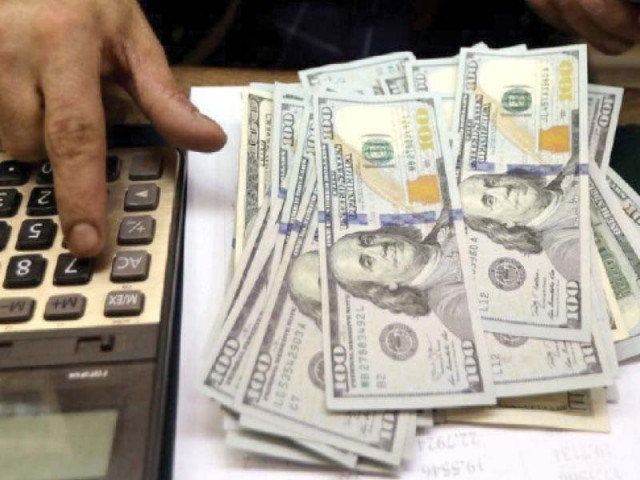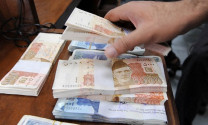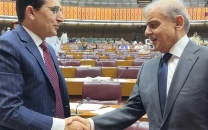From crisis to cushion: FX reserves jump to $14.5b
Reserve cushion can help fast-track reforms, particularly in tax administration, power sector governance

Pakistan has quietly achieved a macroeconomic milestone that would have seemed implausible just a year ago: the State Bank of Pakistan's (SBP) foreign exchange reserves have surged to $14.5 billion, up from a perilous $3.7 billion in May 2023. This turnaround is more than just a statistical rebound; it reflects a profound shift in economic confidence, growing structural resilience, and fresh space for policy manoeuvring.
Barely 14 months ago, the country's reserves were dangerously low – just enough to cover a month's worth of imports. The currency market was under intense pressure, rattling importers and investors alike. The recovery since then has been anchored by three critical forces.
First, a strong comeback in remittances – spurred by global wage conditions and a re-energised diaspora – has ensured steady foreign currency inflows. Second, the government's fiscal tightening, including subsidy cuts, enhanced tax mobilisation, and restrictions on non-essential imports, has helped bring the current account deficit under control. Third, strategic economic diplomacy has unlocked crucial external support from friendly nations, multilateral lenders, and bilateral partners. These flows have been vital in rebuilding the country's foreign currency buffers and plugging fiscal gaps.
At $14.5 billion, Pakistan's reserves now provide roughly three months' worth of import cover – a key threshold that separates economic stability from potential crisis. But the impact goes well beyond macro indicators. With this cushion, importers of critical goods like oil, fertiliser, and pharmaceuticals can operate with confidence, reducing supply chain disruptions. That, in turn, helps suppress inflation by calming speculative buying and currency hoarding.
Moreover, healthy reserves improve Pakistan's credit outlook; global rating agencies view reserve adequacy as a core metric, which directly affects borrowing costs and investor confidence. In short, when FX reserves are strong, inflation expectations ease, bond yields stabilise, investor sentiment improves, and trade flows normalise.
But the gains don't stop there. Robust reserves have opened a strategic window for Pakistan's banking sector. Improved liquidity positions now allow banks to expand lending, especially to sectors such as trade finance, SMEs, and infrastructure. As risk premiums decline, so does the cost of borrowing. Easier access to international working capital further supports business expansion. These developments signal a new phase of financial system resilience and growth.
In essence, strong reserves strengthen the banking sector's ability to fuel broader economic activity, from agribusiness to logistics and industrial development.
Yet, this milestone must be seen as a starting point – not an endgame. To turn this tactical recovery into strategic progress, policymakers must resist the temptation to slip back into old habits. Over-reliance on one-off inflows, fresh untargeted subsidies, or poorly timed borrowing could easily unravel the gains. Instead, the reserve cushion should be used to fast-track overdue reforms, particularly in tax administration, power sector governance, and subsidy targeting.
Exchange rate management also needs to be calibrated carefully to avoid a rapid appreciation of the rupee, which could harm Pakistan's export competitiveness in textiles, IT, and agriculture. Above all, the SBP must communicate clearly and consistently to anchor expectations around inflation, interest rates, and economic direction.
In macroeconomics, perception often carries as much weight as raw data, and in Pakistan's case, that perception has shifted significantly. Communications from international credit rating agencies have taken on a more optimistic tone. Both local and global market analysts increasingly point to Pakistan's rising foreign exchange reserves as a sign of economic maturity rather than volatility.
This evolving narrative is producing tangible results: corporate boards are reconsidering capital expenditure plans, credit spreads are stabilising, and sovereign bond issuances – though still modest – are now being priced with a focus on long-term sustainability rather than short-term distress. In short, the psychological momentum of recovery is beginning to take hold.
Pakistan's foreign exchange reserves have risen from a precarious $3.7 billion in May 2023 to a solid $14.5 billion – a transformation that is neither accidental nor short-lived. It reflects deliberate policymaking, timely external inflows, and disciplined efforts to correct deep-rooted structural imbalances.
This moment offers Pakistan a rare opportunity: to reduce external vulnerabilities, fortify its financial sector, and rebuild investor trust. The months ahead will test whether this upward trajectory can be sustained – through strategic trade negotiations, prudent borrowing, and smart reinvestment in infrastructure. What happens next will determine whether this is a genuine economic turning point or simply a temporary reprieve.
THE WRITER IS A SENIOR BANKER AND TEACHES ECONOMICS



















COMMENTS (1)
Comments are moderated and generally will be posted if they are on-topic and not abusive.
For more information, please see our Comments FAQ